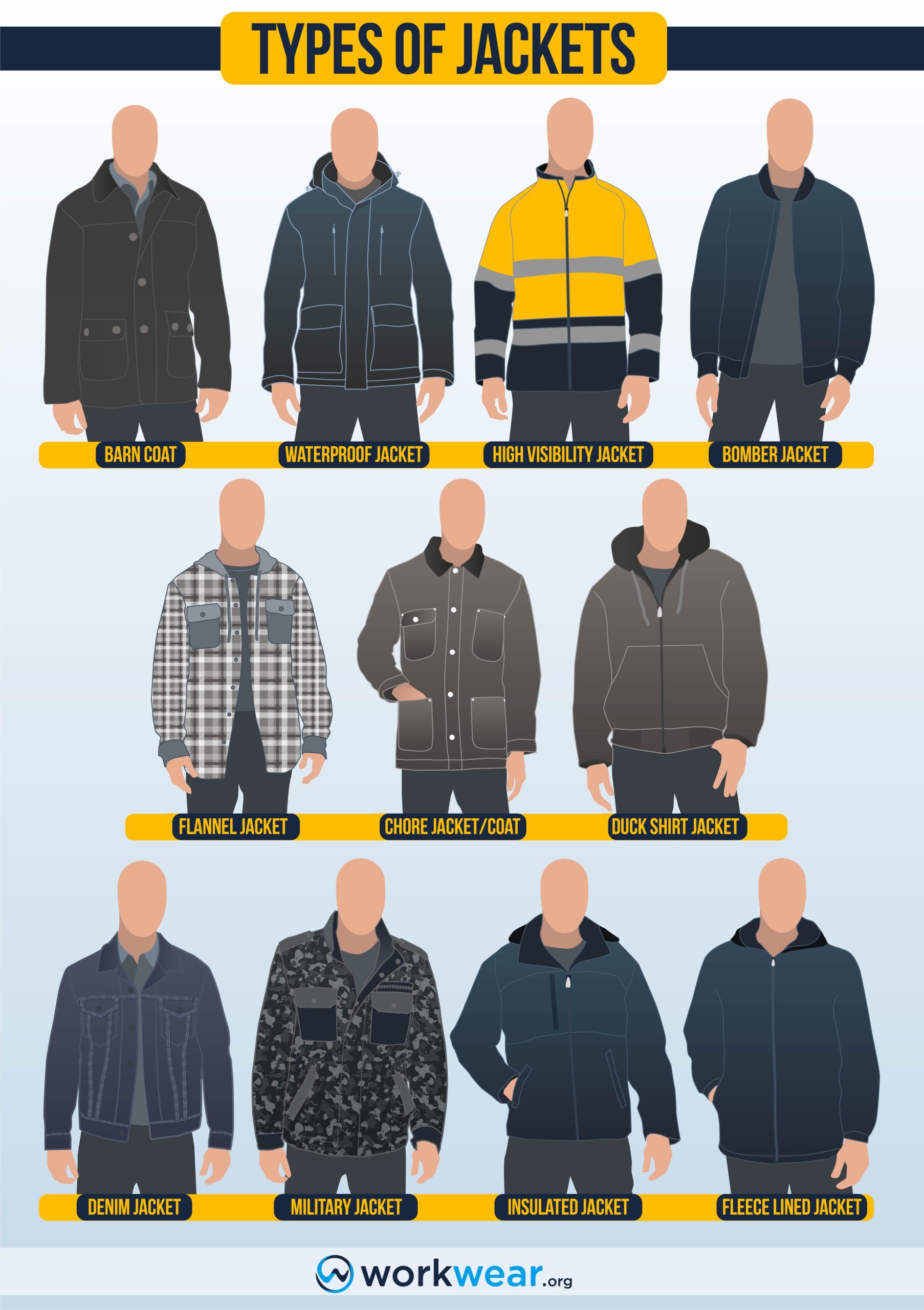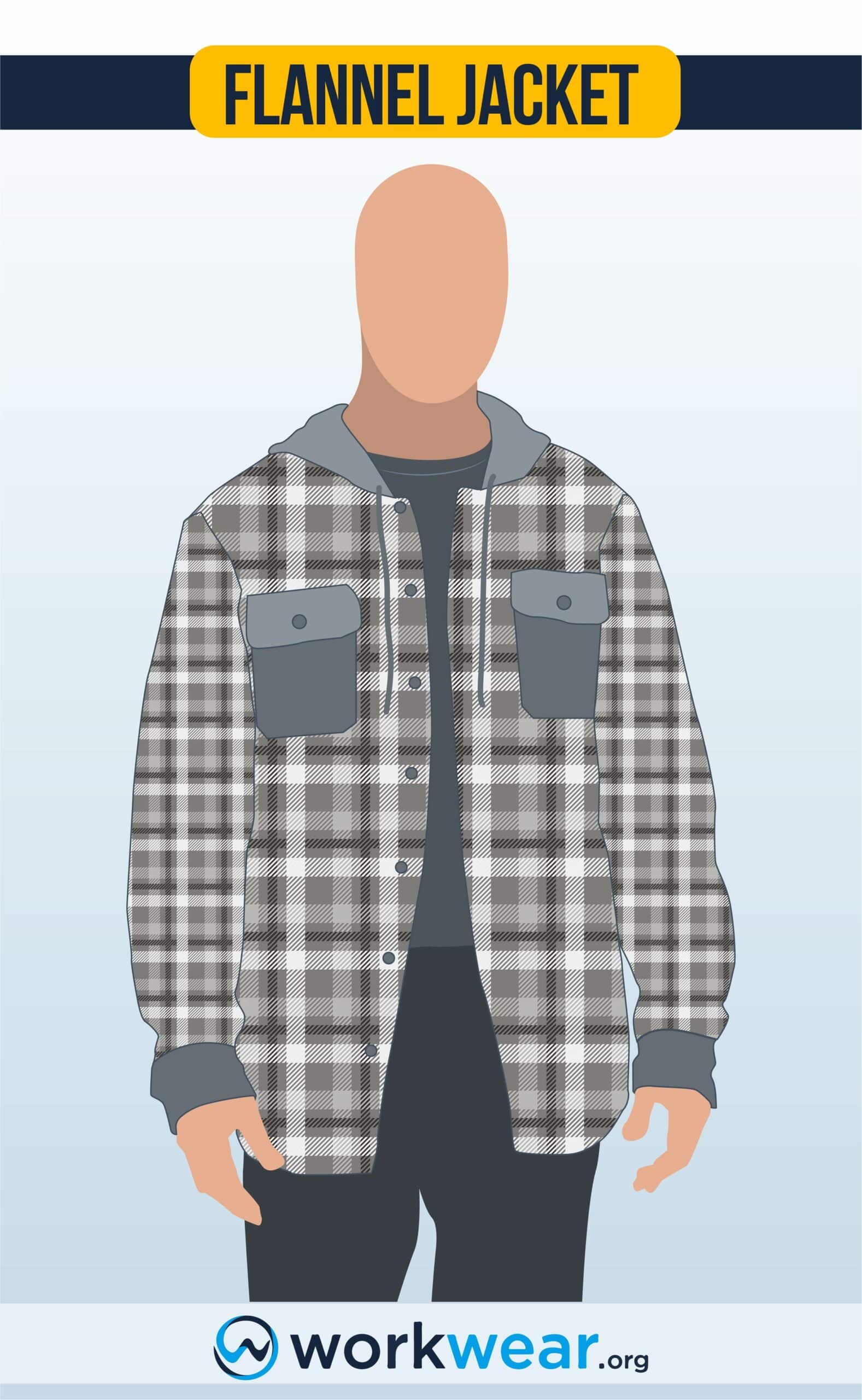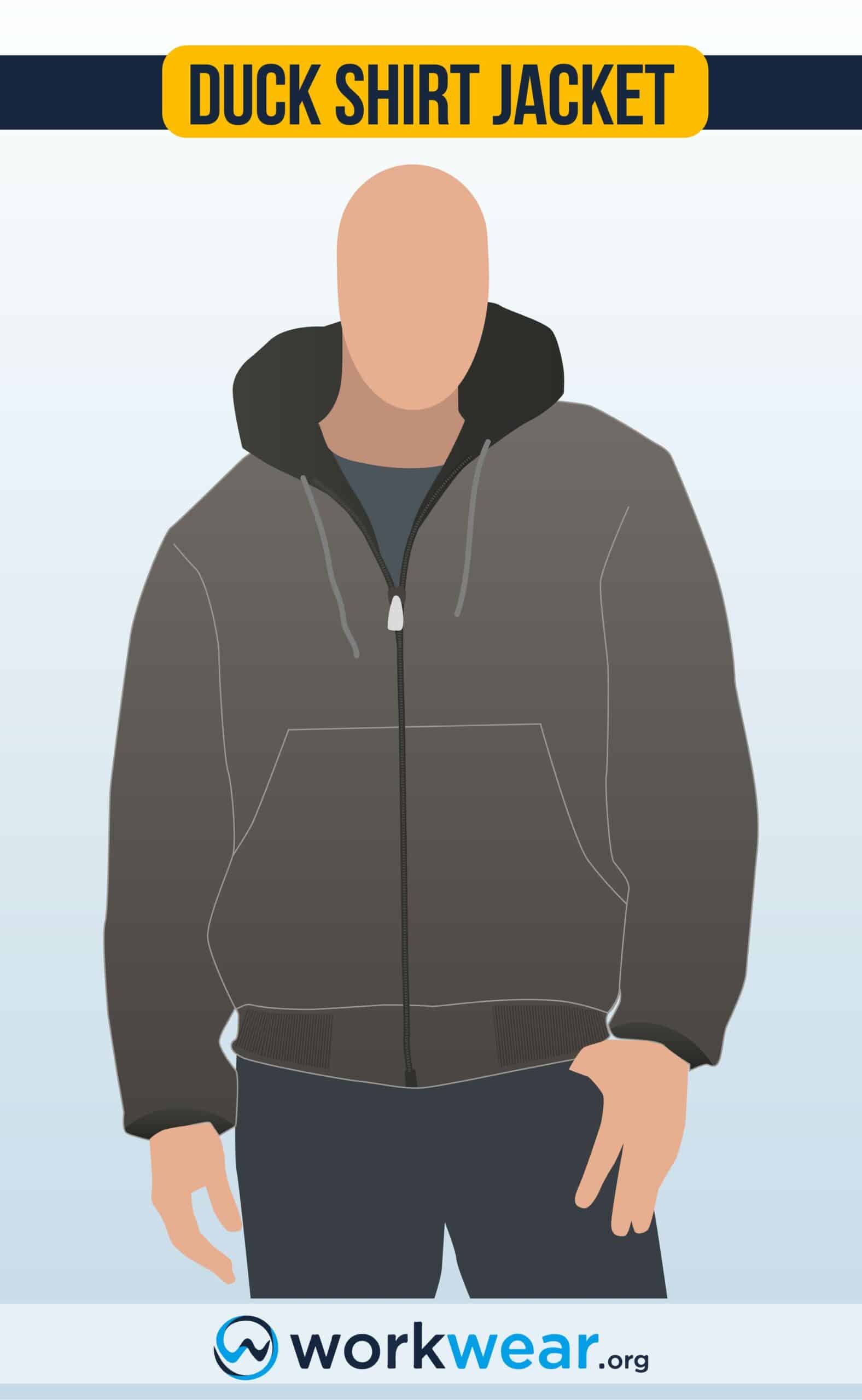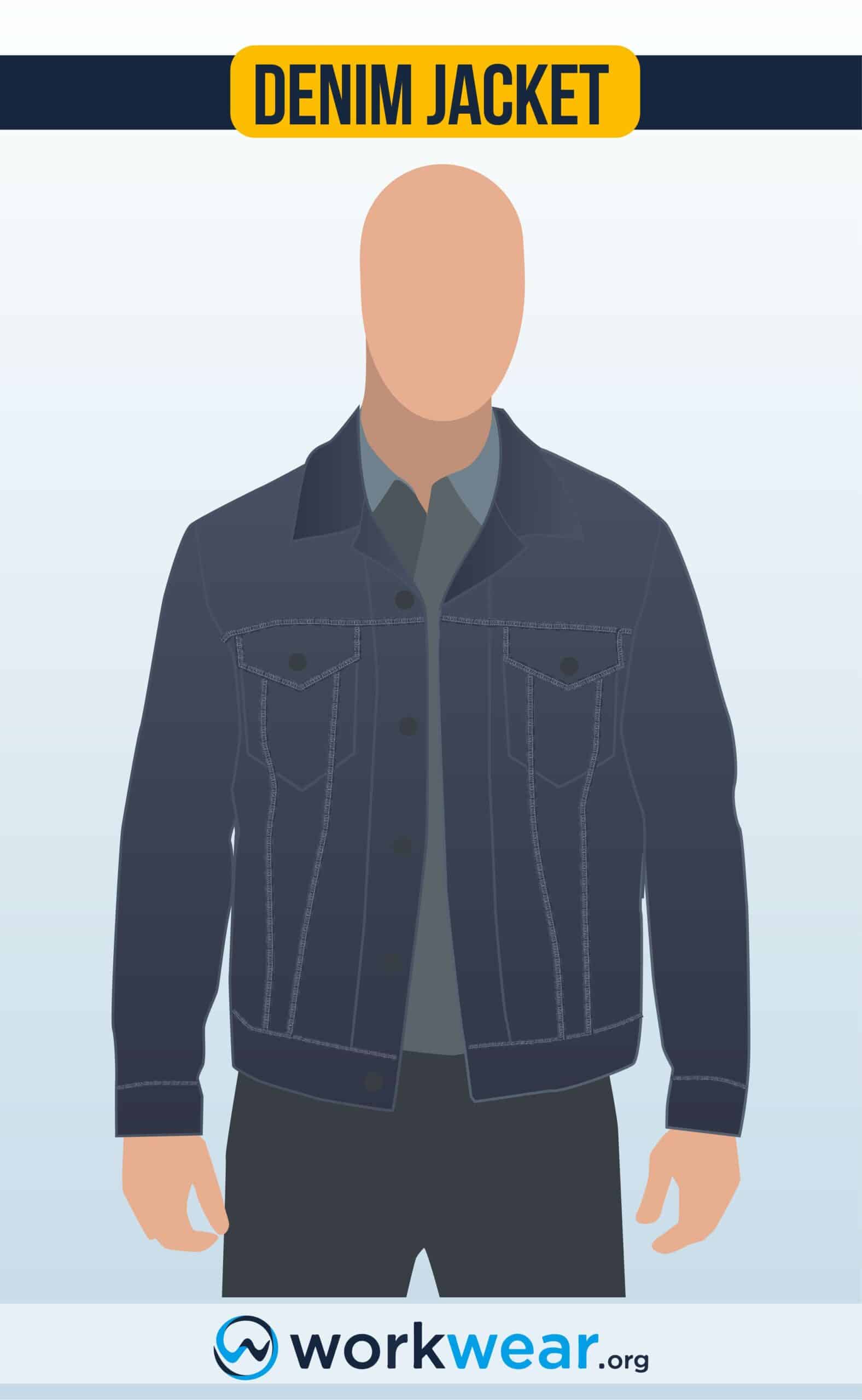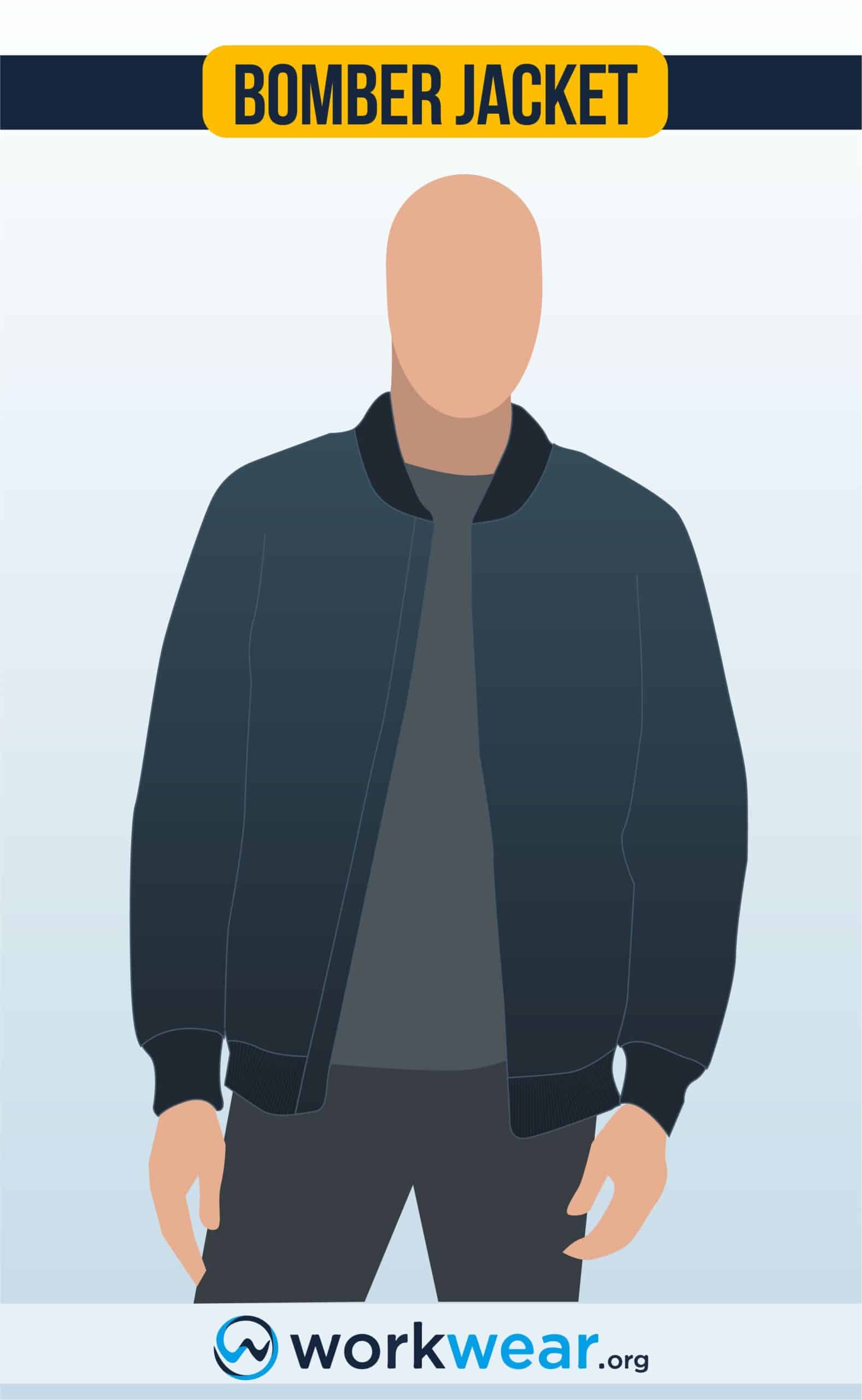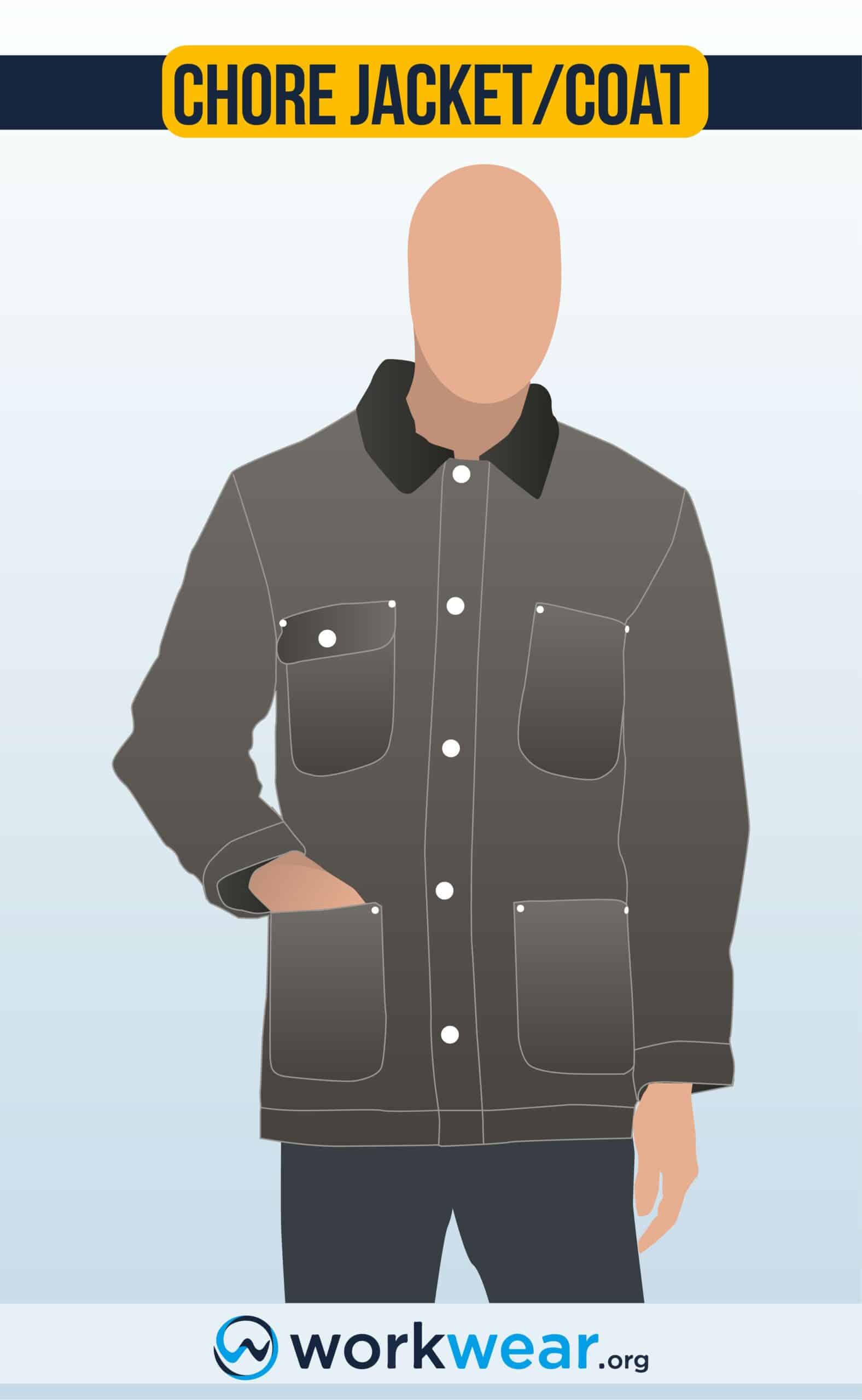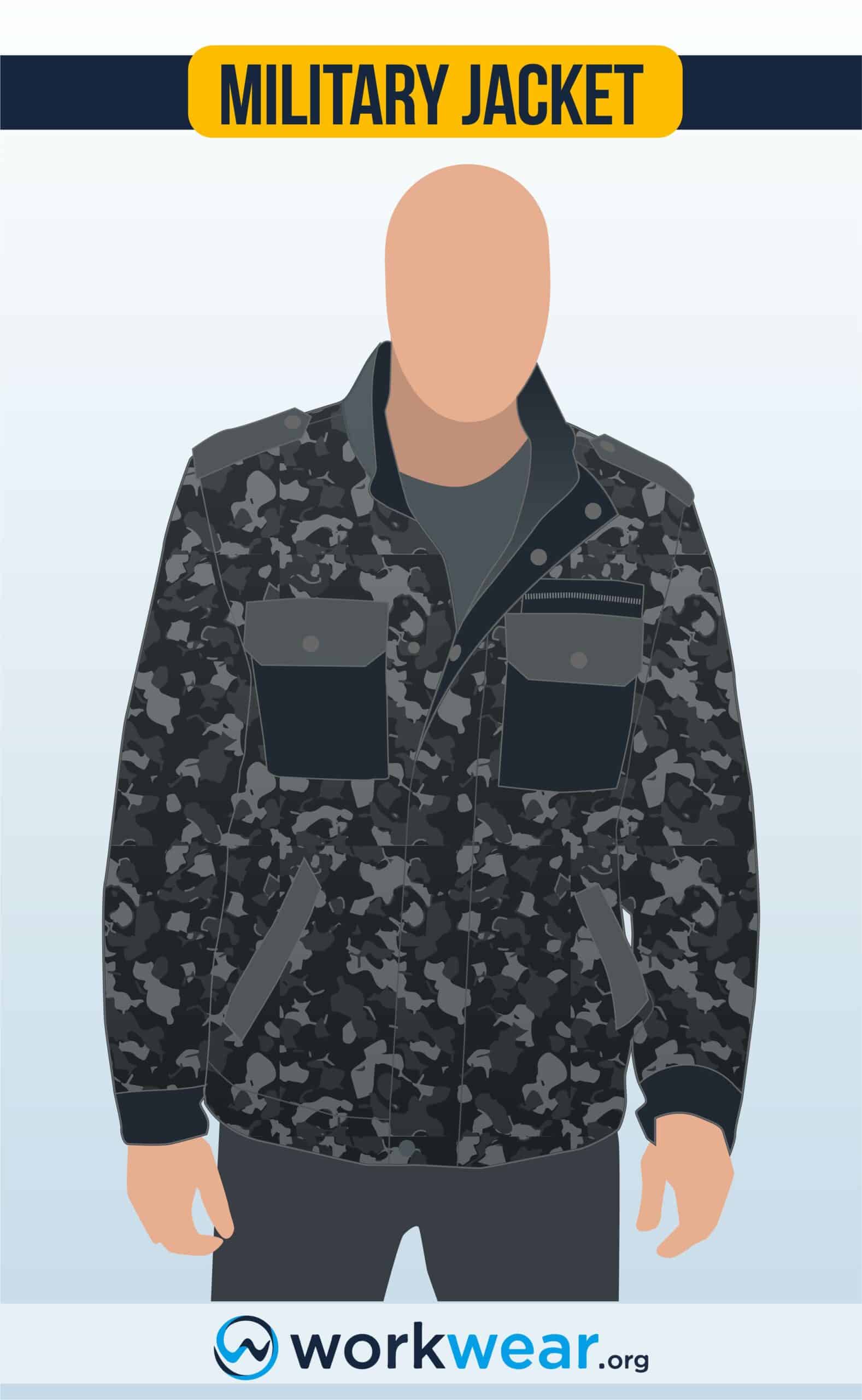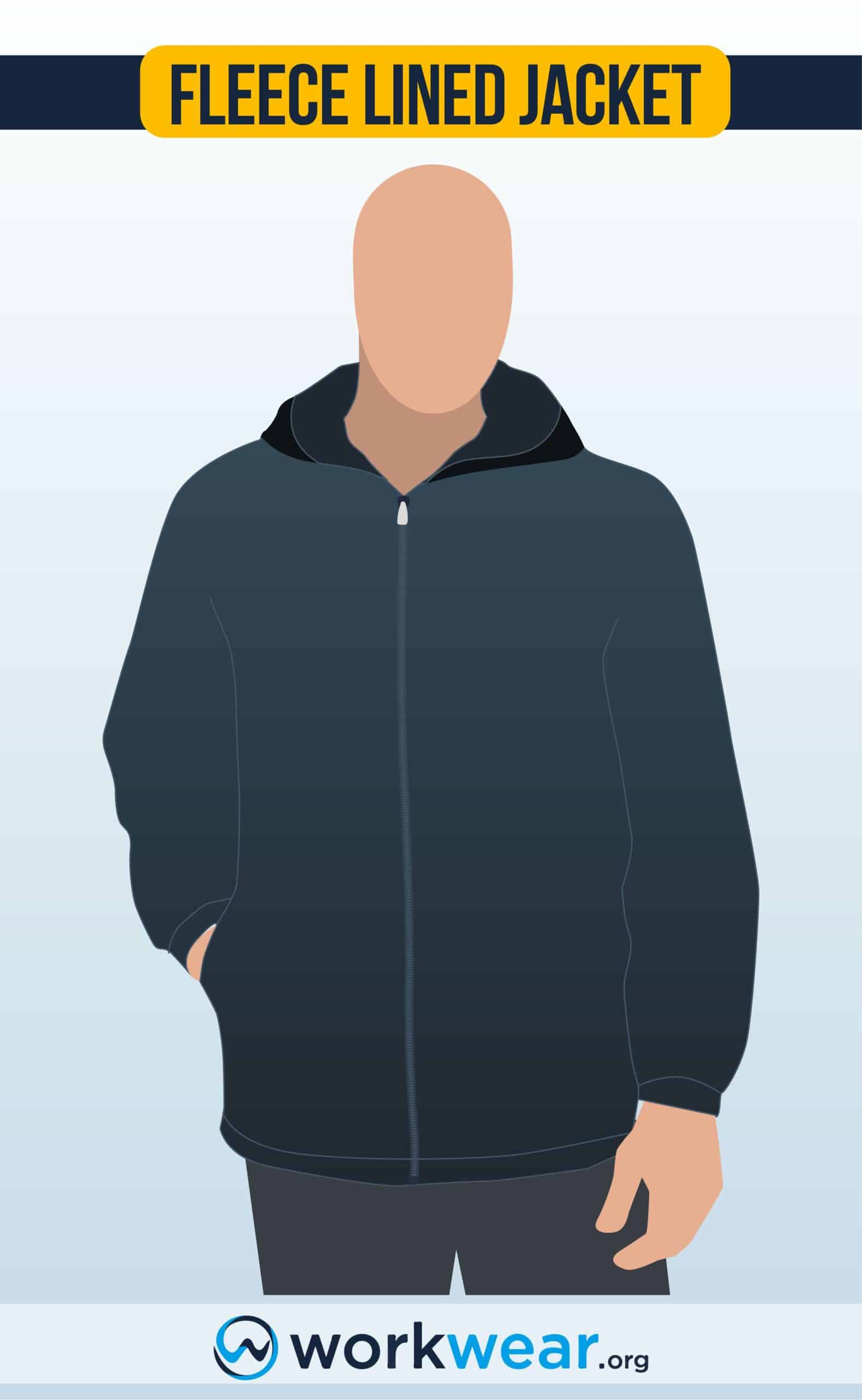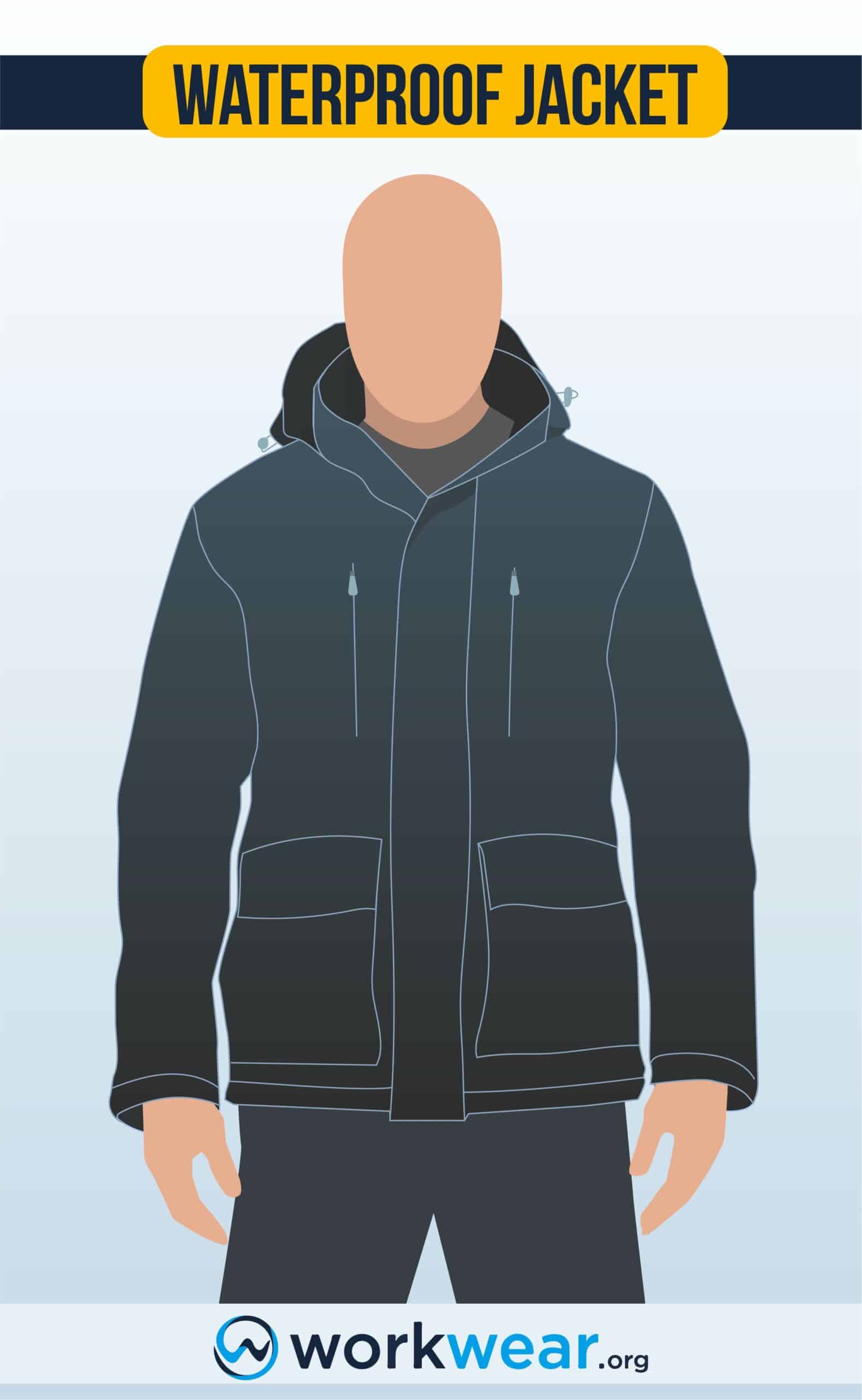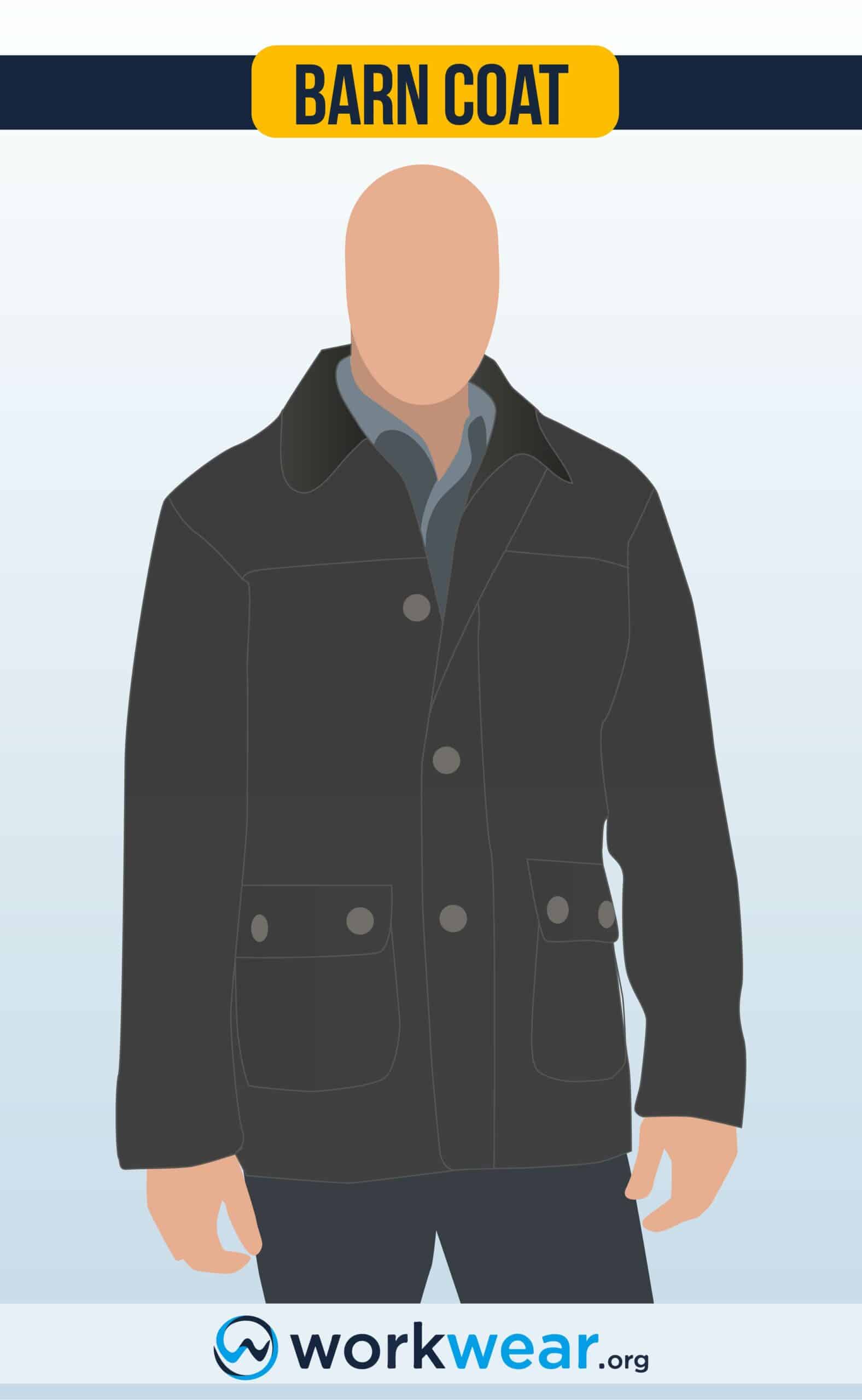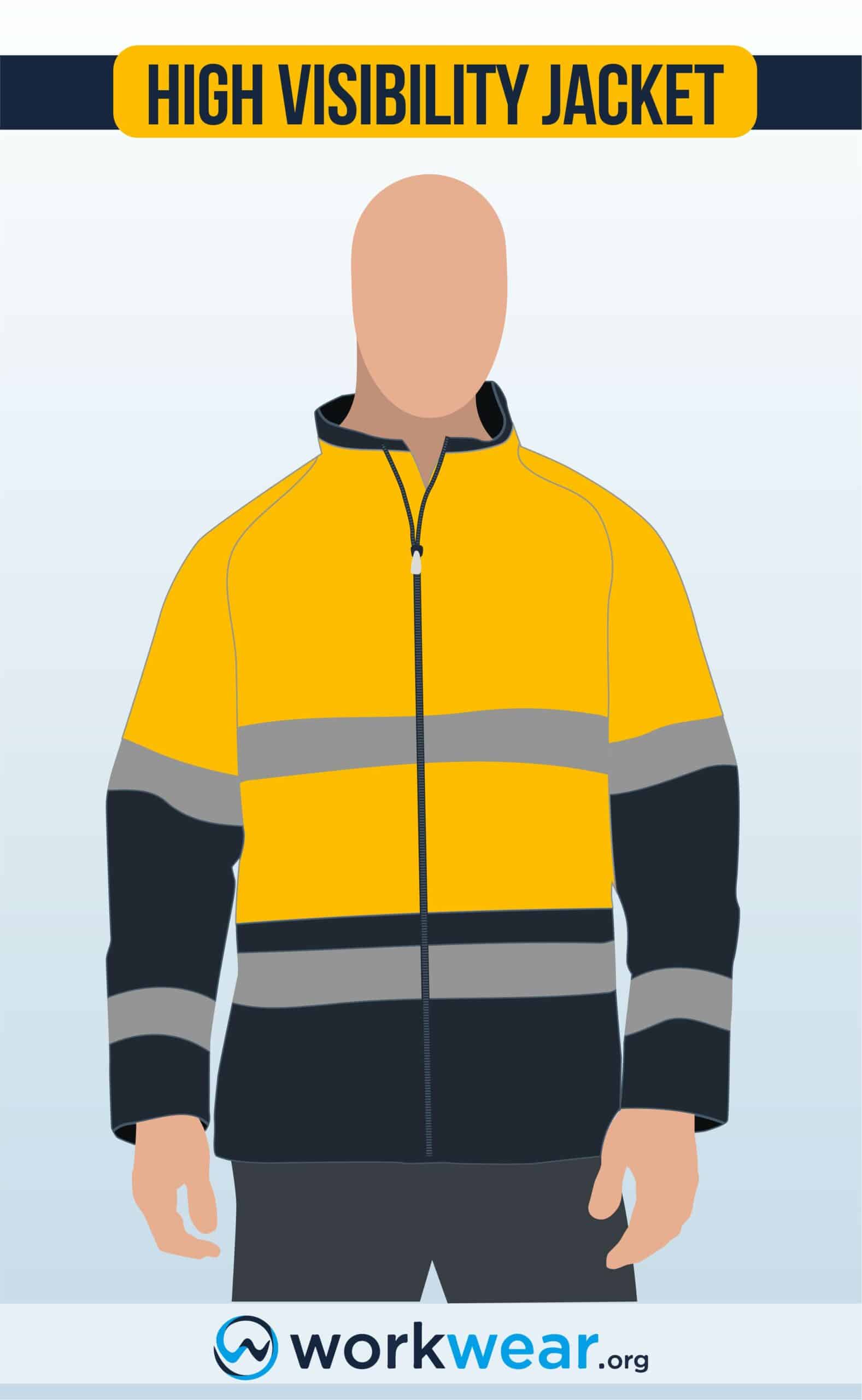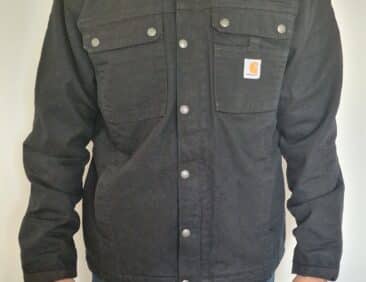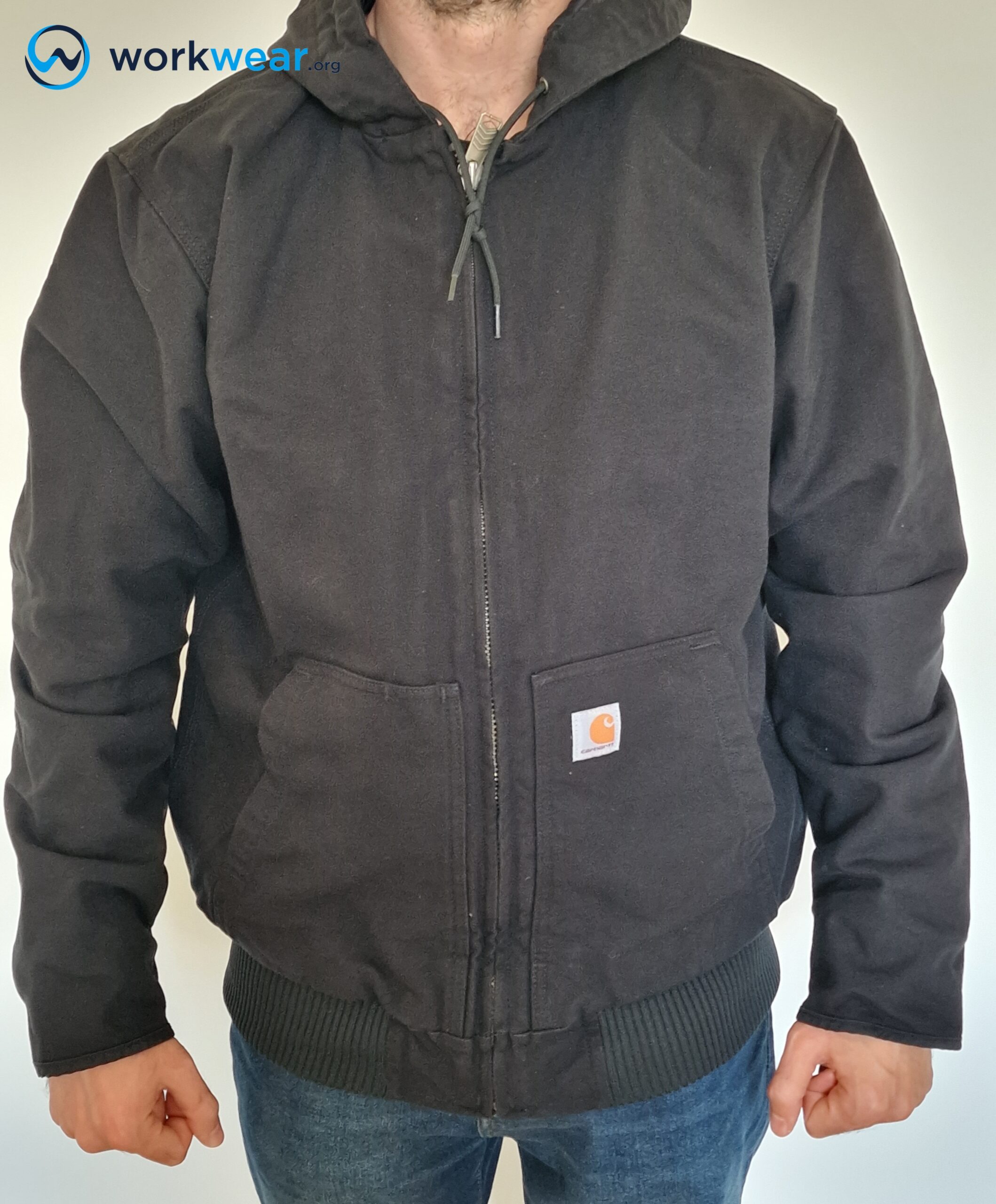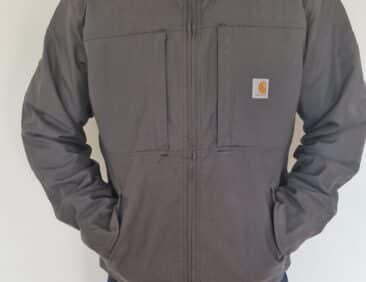Types of Work Jackets for Trades, Construction & Outdoor Jobs
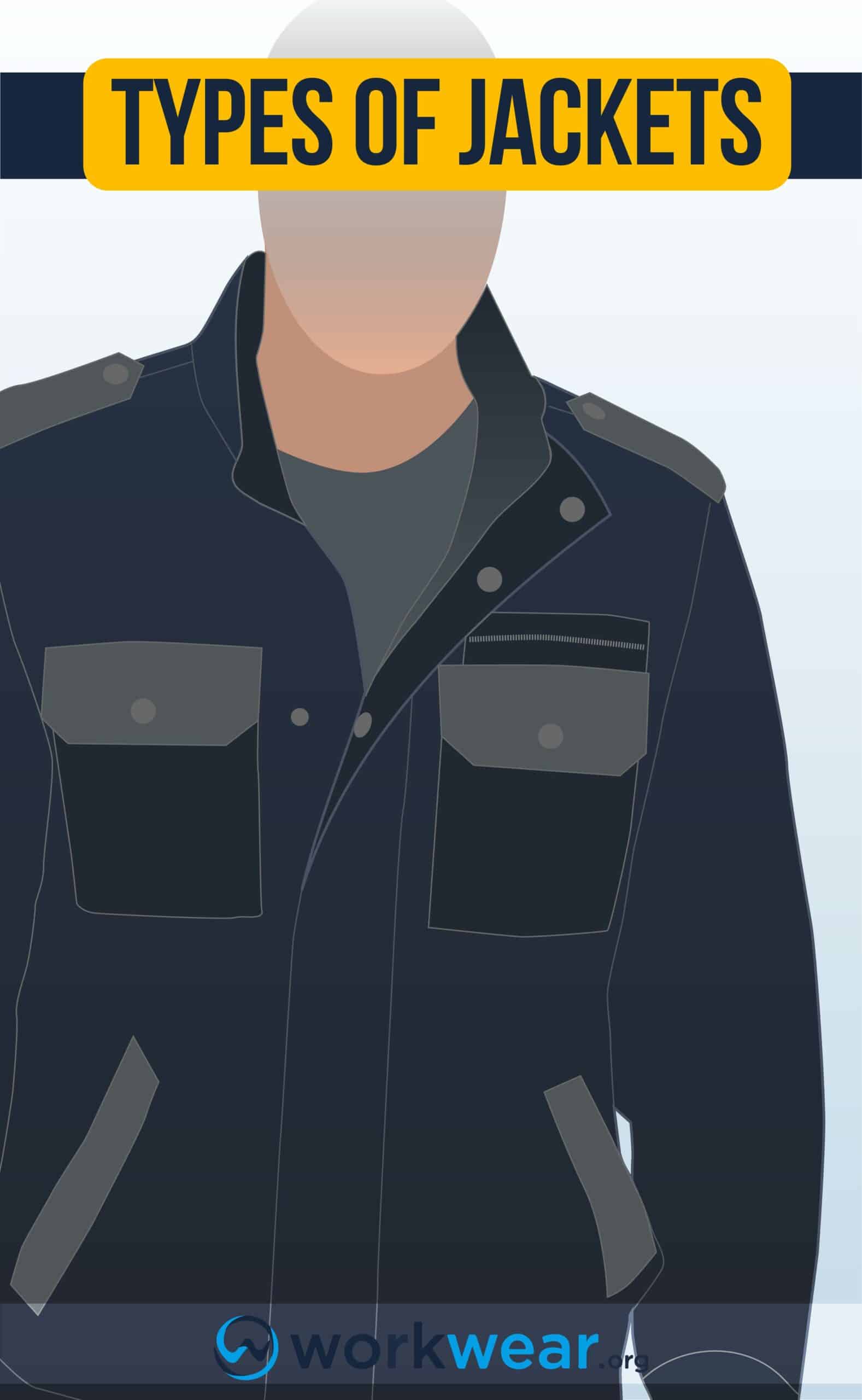
There are many types of work jackets out there, and it can be tricky to find the one that’s suitable for your job, needs, and weather conditions. Having tested many work jackets for trades, construction, and outdoor jobs, we’ve written this article to explain and demystify the main types and explain their use and pros and cons.
What makes work jackets different from regular (lifestyle or office) ones is that they have enhanced qualities – including durable fabrics, insulation, and high-visibility elements.
Key Takeaways
- Different types of work jackets address varying job requirements and style preferences. When choosing work jackets, it’s important to consider your job type, work environment, and weather conditions.
- Flannel, duck shirt, and denim work jackets have versatile profiles that can be used in mildly cold and warm environments.
- Military-style and bomber jackets work well in informal indoor office settings, with the military style being ideal for mildly cold settings and the bomber style working better in cold environments.
- Barn coats are designed to keep up with cold outdoor conditions and often have waterproof features. In contrast, chore coats or jackets can be used in mildly cold and warm surroundings, while barn coats often have waterproof components and are built to keep the wearer comfortable and protected in cold outdoor settings.
- Waterproof work jackets seal out the rain and other liquids for continuously comfortable dryness, and fleece-lined and insulated jackets trap much-needed warmth to maintain a comfortable experience in severely cold workplaces. On the other hand, high-visibility work jackets make the wearer more easily seen at nighttime and in other low-light conditions.
Things to Consider When Choosing Work Jackets
Type of Job
Your job type is important when choosing the best work jackets as it dictates what you need and what’s appropriate. For example, heavyweight, waterproof work jackets may offer superior protection. Still, you won’t be able to fully maximize them (and they may feel uncomfortable) if you mostly work indoors in office settings.
Your profession will also determine if you need work jackets that adhere to specific standards, such as those set by the ASTM for high-visibility work jackets.
Weather
The weather conditions in your work area must be considered when choosing a work jacket.
This ensures that the jacket you pick can protect you against the elements whenever applicable, such as with waterproof work jackets when you work in constantly wet conditions.
The appropriate work jacket type can keep you comfortable enough to continue working without sacrificing your ability to move naturally.
Work Environment
It’s crucial to keep in mind the work environment when selecting the most suitable work jacket.
This can help you get the function you need from the jacket while ensuring that you’re comfortable and protected at the same time.
Suppose your job requires you to work in warm environments while doing continuous physical activity. In that case, you’re better off choosing lightweight work jackets that don’t restrict mobility rather than insulated, thick ones. On the other hand, jackets made with abrasion-resistant materials may be best if you’re in challenging surroundings with exposure to abrasion hazards.
Types of Work Jackets
Flannel
Flannel jackets are made with a soft material that has a distinctively fuzzy texture and offers comfortable warmth.
They’re ideal for layering, offering just enough warmth on chilly days but not having enough bulk so they can still be worn under heavier garments when the temperature drops even further.
The soft material gives a cozy feeling when it’s brisk outside without weighing you down with extreme bulk, making it easier to do certain tasks without needing to deal with stiff materials.
Flannel jackets often come in plaid designs (which may be synonymous with “flannel”) but are also available in plain fabrics. Their casual silhouettes are ideal for informal office settings but can also be used outdoors. They’re also ideal for settings that can warm up quickly because the material isn’t seriously warm.
However, as these jackets generally don’t have water resistance (unless specified), they’re not recommended for wet conditions or in bad weather.
Duck Shirt
Duck shirt jackets are referred to as such because of the fabric they’re made with.
Cotton duck (or duck canvas) is a plain, woven fabric that’s much more resistant to tearing and abrasion, especially compared to thinner materials such as plain cotton.
The enhanced strength makes these jackets suitable for tough work settings where the garments may be exposed to abrasive materials. However, duck jackets tend to look bulky (because of the heavy fabric), so they’re suitable for outdoor use in cold weather – although there are more streamlined designs that work well with office wear.
Duck cotton jackets tend to feel heavy and offer generous warmth, especially if they come with insulation materials that are more suitable for colder environments. In addition, they can come with or without hoods to protect the head against the rain and often have several pockets to hold personal belongings. Meanwhile, the ones with water-repellent or waterproof linings or coatings are ideal for use in wet surroundings.
Denim
Denim work jackets are preferred because of their practical use while on the job, but they’ve also become staples in countless wardrobes because of their style benefits.
The material effortlessly injects a rugged appeal to different outfits so that denim jackets can be fully maximized on and off the work site. The structure of denim work jackets can vary widely depending on the thickness and texture of the fabric used, and they typically don’t have hoods built in. Thicker denim can result in jackets that are bulkier and ideal for rough settings, while thinner fabric delivers a more streamlined silhouette that’s great for layering under much heavier outerwear.
Denim work jackets offer high-performance use and are strong enough to last long in challenging work conditions. The ones made with thick denim are suitable for adding a bit of warmth during chilly days, especially if they come with fleece lining or other insulation materials. These jackets can also be enhanced with water-repellent properties to make them better suited to rainy or wet environments.
Bomber
Bomber jackets were originally designed to be worn by pilots during World War II, with the name most likely coming from the bomber planes that the pilots controlled. The original bomber jackets were insulated with fur lining to keep out the cold in open cockpits.
Now, bomber work jackets are still designed to maintain a comfortable experience while working in cold environments, with plenty of choices that have built-in insulation. In addition, since they’re much slimmer than winter coats, they’re often preferred by those who work in low-temperature locations but don’t want the bulky feel of a winter coat.
Bomber jackets can be distinguished by the stand collar that adds a sporty vibe, giving the jackets a casual style that works well in different job settings. They can be built with or without a hood and may come with a water-resistant or waterproof shell to protect the wearer against the elements. These jackets fit more closely to the body than bulkier options, so they can be worn in office settings without looking out of place – especially the ones that don’t come with a hood.
Chore Coat/Chore Jacket
A chore coat or chore jacket has a boxy, loose-fitting design that’s ideal for wearing over other clothes.
The original chore coat was used in France during the 1800s by workers- such as factory workers, farmers, and railroad engineers – as they did their chores, hence the name. Made with tough fabrics such as canvas, denim, heavy cotton drill, or twill, these jackets can keep up with demanding jobs and activities without compromising on comfort and movement.
Chore jackets are characterized by a four-button front closure, three patch pockets, and a simple collar. They’re built to fall loosely around the body instead of having a structured profile, easily adapting to the movements while offering warmth and protecting the inner garments while on the job. Chore coats have gone a long way since their first use as workwear and are now also commonly used in indoor office settings and are preferred by many for their casual style.
Military Style
Military-style jackets were used by men and women working in different military branches.
As more people outside the military discovered their functional benefits, military-style jackets became part of the work ensembles in many professions and industries. Those made with thinner, non-water-resistant fabrics are suitable for indoor work areas, while the more rugged designs with water resistance can be used outdoors and in wet conditions. These jackets have versatile designs that go well with most attire, so it’s not surprising to see them being maximized for their style power.
Military-style work jackets can be made with cotton twill, khaki, polyester, or a blend of cotton and nylon. These jackets generally have loose-fit designs that allow ease of movement and can be layered with shirts to provide more comfort and protection when the temperature drops. In addition, they typically come in neutral colors, so they’re quite easy to partner with different shades of inner shirts or outerwear.
Fleece-lined
Fleece-lined work jackets come in varied designs and can be made with different fabrics, including cotton duck, denim, and flannel.
The wide range of designs makes fleece-lined jackets great for use in different work environments. Those with water-resistant or waterproof structures are recommended for use outdoors or in wet areas. In contrast, the styles without water resistance are recommended for warding off the cold in indoor settings.
The Sherpa or fleece lining can be fitted in the body or the hood (or both) to deliver superior warmth and comfort while working in cold surroundings. The fleece is the jacket’s insulation material that traps heat to keep the body comfortably warm in low-temperature work areas. In addition, high-quality fleece lining incorporates cozy softness to the jacket’s interior to elevate comfort while working. It also adds a bit of bulk necessary to preserve the warmth and prevent the chill from setting in.
It’s worth noting that this may not work for those who prefer roomy jackets and is unsuitable for hot work locations as it can turn unbearably warm.
Waterproof
Waterproof work jackets offer continuous protection from wetness.
They’re ideal for working outdoors in bad weather conditions and work just as well in indoor job areas that are frequently exposed to extreme moisture. The waterproofing can come from strong fabrics that are waxed or coated with a special substance to repel liquids.
Design enhancements such as seam-sealed or fully-taped components strengthen the jackets’ resistance to liquids to keep the body comfortably dry in wet surroundings.
Waterproof work jackets come in various styles, so it’s not difficult to find one that suits your requirements while on the job. The waterproofing can be featured in lightweight, unlined jackets ideal for warm settings. It can also be incorporated into bulkier, insulated work jackets suited for extremely cold and wet areas.
Barn Coat
A barn coat is an ideal companion for challenging tasks in cold outdoor settings, such as a barn referred to in the name.
It’s meant to keep you warm and often comes with built-in insulation, such as fleece lining or low-profile insulation materials that won’t get in the way of natural motion. In addition, barn coats typically have waterproof or water-repellent structures to protect you against the elements.
This ensures that the rain and other liquids won’t penetrate while you finish your tasks in wet conditions.
Barn coats have loose designs and can easily fit over other layers of clothing. Their casual style can complement informal dress codes in cold indoor office settings. In addition, their profiles usually come with large pockets to secure important items that may be needed while on the job.
To deliver enhanced protection on the trails and in different work settings, this hiking boot’s premium construction is designed to easily keep up with challenging activities and environments.
Since barn coats are built to deliver extra warmth and protection against the elements, they’re unsuitable for warm surroundings where they can easily turn uncomfortably hot.
Insulated
Insulated work jackets work hard to preserve much-needed warmth in exceptionally cold settings. The insulation is built into the jacket to trap body heat and make it more comfortable to move around low-temperature work areas.
Different insulation materials keep work jackets warm, including fleece, quilted flannel, down (natural or synthetic), and synthetic insulation (such as 3M Thinsulate). The thickness and weight of the insulation material directly impact the level of warmth offered by the jacket, so this should be considered when choosing an insulated work jacket that best suits your needs.
Insulated jackets for work are offered in a wide range of designs, so it’s not hard to look for one that fits your style preferences. They’re available with or without waterproofing and with or without a hood, so there are plenty of options to choose from when you’re looking for insulated work jackets that can be worn in wet or dry cold environments. In addition, these jackets often have adjustable hems and cuffs to ensure that the warmth won’t escape and cold air can’t come in easily.
High-Visibility
High-visibility work jackets are crucial for workers’ safety in low-light conditions and other settings that compromise visibility.
They’re typically created with fluorescent or extremely bright-colored materials meant to stand out and be seen more easily. In addition, these jackets often come with reflective materials on the front and back, increasing the wearer’s visibility for improved safety while on the clock.
High-vis work jackets are available in different styles to cater to workplace needs. For example, high-visibility jackets with lightweight structures are suitable for use in non-harsh, warm conditions. Meanwhile, high-vis winter jackets with waterproof shells are better suited for extremely cold and wet surroundings.
Comparison Table
|
Professions |
Work/Weather Conditions |
|
|---|---|---|
| Flannel |
|
|
| Duck Shirt |
|
|
| Denim |
|
|
| Bomber |
|
|
| Chore Coat |
|
|
| Military |
|
|
| Fleece-Lined |
|
|
| Waterproof |
|
|
| Barn Coat |
|
|
| Insulated |
|
|
| High-Visibility |
|
|
Conclusion
Different types of work jackets cater to varying needs and preferences on the job, and it’s a good idea to know about these types to find the work jacket that suits you best. Flannel, duck shirt, and denim are versatile work jackets that can be used in mildly cold and warm environments, with styles that look great with workwear and casual attire. The military-style and bomber jackets work well in casual indoor office settings, with the former being suited for mildly cold settings and the latter working much better in cold locations. Barn coats are designed to keep up with cold outdoor conditions and often have waterproof features, while chore coats can be used in mildly cold and warm surroundings. Fleece-lined and insulated jackets preserve much-needed warmth in exceptionally cold workplaces; waterproof jackets seal out the rain and other liquids to retain comfortable dryness; high-visibility jackets make the wearer more visible in low-light conditions.
FAQs
- Are all insulated work jackets waterproof?
- No, there are insulated jackets that are not waterproof, and these styles are suitable for working in cold environments that don’t usually get wet – such as those that are located indoors.
- Why is nylon used in the sleeves of some fleece-lined jackets?
- The nylon makes slipping the sleeves on and off easier because the material is much smoother than fleece.
- Can denim jackets be used in cold conditions?
- Denim jackets lined with flannel or fleece can be used in cold conditions, but they’re not suitable for extremely low temperatures.
- Why do high-visibility jackets usually come in fluorescent lime, yellow, or orange colors?
- These colors are the most often used for high-vis garments because they stand out vividly against common equipment and backgrounds and are also exceptionally reflective.
678+
Products Reviewed
24+ Years
Combined Experience
500+ Hrs
Field Testing
